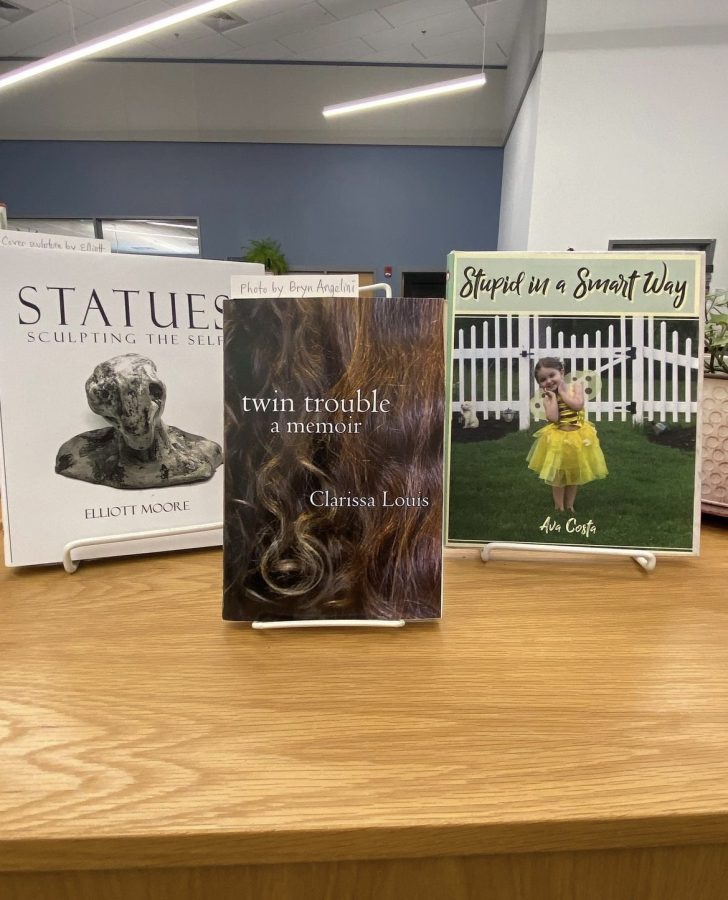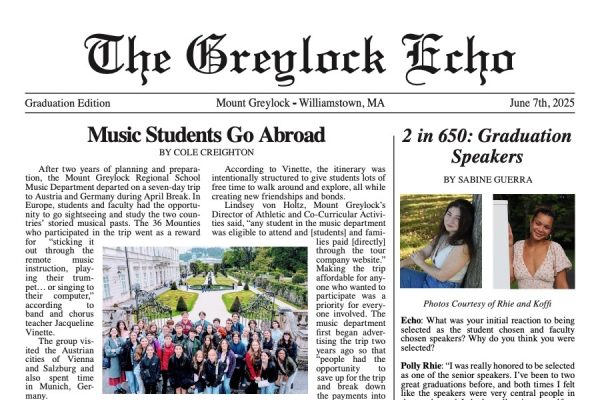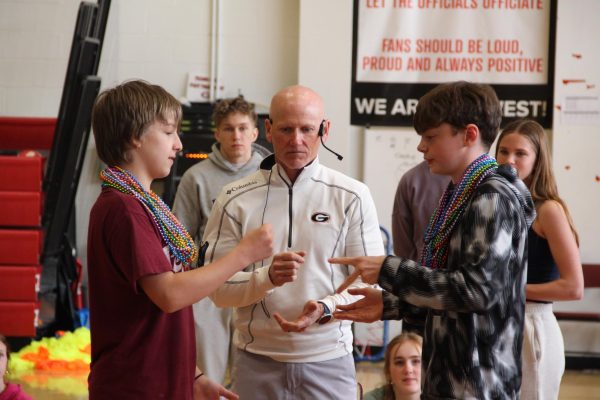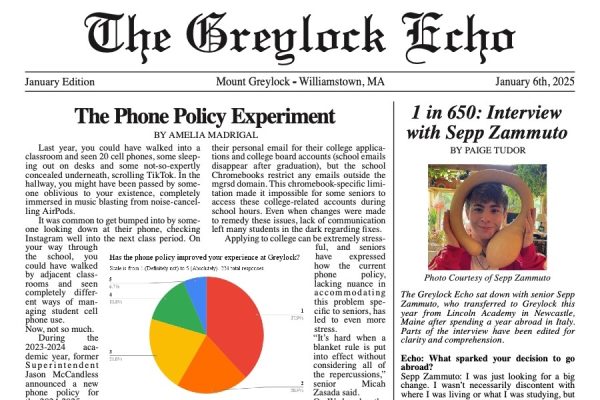Students Create Memoir Covers in Graphic Design Course
Many Greylock students spend part of their day in the library, whether that be for a class or to see friends at break. With the library decor constantly changing, students may not have noticed a recent exhibit: student-made memoir covers created by Karin Stack’s first semester Graphic Design I class.
Students have done a range of projects from album covers to concert posters, according to Stack, but recently completed a project focused on creating a memoir about their lives. The memoirs, theoretically written about “what their lives would be like twenty years in the future,” included aspects of both graphic design and creativity, said Stack. By imagining the “best possible scenario” and “worst possible scenario,” students were able to thoroughly consider what they would write about. The memoirs attempted to address both what someone’s life would be like while also working on issues in graphic design.
“I was really interested when given the assignment,” said junior Gabby Quagliano, who’s memoir titled “Mental Space” was on display.
The process started using deaccessioned books from the library—ones which are no longer available to read. Students designed the covers of their memoirs using a photo as a background. “Some used family photos, some used other members of the class to take photos for them,” said Stack.
The memoirs were composed using Adobe InDesign, a professional page layout software. The program can be “used to create a magazine or book publishing project” and gives students the ability and freedom to create their own memoir from scratch, according to Stack. Putting together the memoirs themselves was not an easy task, as the projects “went through a bunch of changes and variations,” said Stack.
Topics and themes ranged from “silly…to hilariously beautiful,” said Stack. Some students chose to explore the creative parts of the project, while others worked on the logistical parts of actually designing and creating their memoirs.
Senior Clarissa Louis themed her memoir around her relationship to her twin brother and titled it Twin Trouble. Louis noted that a few people asked her about writing the memoir because the cover looked so real. The creative freedom of the project allowed students to create memoir covers that represented them accurately, making them believable enough to be real books.
“Being a twin is important to me, and this memoir is a great way to imagine my future as a twin,” Louis said.
The freedom of the assignment allowed students to take several different approaches to their memoirs. “Students did not really have to care about that project the same way some cared about their memoir and how they were going to present themselves through the cover,” said Stack. For some, a school project turned into much more than just a project, becoming a representation of self.
The goal of the project, Stack said, was to “think about what you would want your life to be like, while also being open-ended.” The project gave students freedom to think about their lives in an out-of-the-box way, while also exploring the creativity in designing a memoir.
“The assignment was sort of an avenue to approach design issues. There were pieces with some emphasis on what you wanted to communicate and how your design choices best communicate this to your viewers,” Stack said.
The basis of the assignment gave students independence, allowing them to turn their memoirs into something of their own, past just a basic school project. “Students really got into it because I gave them a lot of freedom,” Stack said.
The ability to structure and create their memoirs how they wanted gave the project pretty positive student feedback. Louis noted that she had to think about the project in a different way when it came to having to design the cover of her own memoir: “You see a lot of books, but you don’t really think about the design of [the cover] until you have to design your own.”
The project was recommended for the future by multiple students, and Stack said that it’s a contender for next year.









